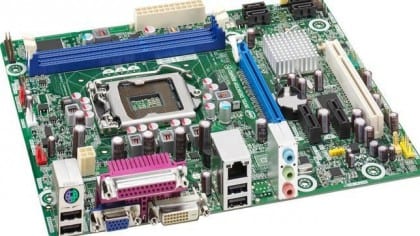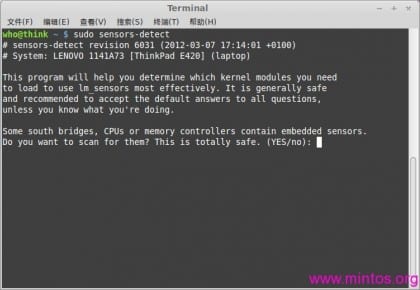Maintaining a stable temperature in its hardware (processor, graphics card, memory, etc.) has always been essential for the proper functioning of any computer is essential to know how the computer works and to know if we have difficulties with high temperatures in the same and then bring us complications.
The problem of high temperatures can arise because the putty in contact with the processor has deteriorated, or also why a fan has stopped working properly.
Now let's see how we can monitor the temperature in our hardware and thus prevent any problem in our equipment.
We install the Libraries
First we must install the libraries that will allow us to detect the sensors that are on the motherboard and in the processor, the library "lm-sensors" is installed in a terminal with the command:
sudoaptitudeinstall lm-sensors
The process is similar to detect the sensors that are on the hard disk, we only need to install "hddtemp" in a terminal, the command for this would be:
sudoaptitudeinstallhddtemp
During the installation process of hddtemp We will see a series of options to choose from, we will select those that are by default in Ubuntu (in UPPERCASE) we will write them and then press Enter.
Pay attention when the question appears if “we want to run the hddtemp daemon at startup " we must write yes.
Since we have the libraries, we are going to make our Ubuntu System detect the sensors on the computer with the command:
sudosensors-detect
Then we will see some questions and select the option recommended by the system (UPPERCASE). Of course, we must pay attention, read and not just press "Enter" because at the end of the process it will ask if we want to add those lines to / etc / modules automatically? (yes / NO). I personally write YES to do that process automatically when the system reboots and I haven't had any problems.
After we carry out this step we restart the equipment and that's it.
Now to Monitor the temperature
We can now monitor the temperature in our equipment using the command sensor, however we can also install sensor which is an application that is available directly in the Software Center and with which we will see the temperature graphically.
To install it:
sudoaptitudeinstallpsensor
Here some features of Psensor
- It allows us to monitor the motherboard sensors, processors, fans, hard drives, graphics cards, and CPU usage.
- We can configure it with an alarm that alerts us when it reaches a temperature (which we choose as a parameter) and warns us that it has reached that temperature with an information balloon.
- We will see the graphics from a comfortable window.
- and we will also have an icon on the top panel for quick access.






Can you see the temperature in the panel icon or do you have to open the window?
I currently use Linux Mint Rafaela and the current processor temperature appears on the panel after adding the «sensors add-on» to the panel and if it gives permission error, sudo chmod u + s / usr / sbin / hddtemp is executed
after which the panel would have to be restarted: xfce4-panel -r
Before I configured with sudo sensors-detect
Well the article is appreciated.
It is only necessary to separate the commands to execute so that they work for those who want to execute them, if aptitude does not work they must install it: apt install aptitude
sudoaptitudeinstall lm-sensors
sudoaptitudeinstallhddtemp
sudosensors-detect
sudoaptitudeinstallpsensor
So:
sudo aptitude install lm-sensors
sudo aptitude install hddtemp
sudo sensors-detect
sudo aptitude install psensor
Greetings.
apt-get install gkrellm lm-sensors 😉
Gkrellm rules, apart, allows you to monitor 1000 more things, such as services and disk with good aesthetics.
Testing
Hi, there is a command to vary the speed of the fans, it is that they make a lot of noise and I wanted to lower the revolutions.
Regards,
Tomeu.
Thanks for the lm-sensors tutorial, very well explained, if you could tell us how to modify the voltages of the fans to adjust the power, it would be perfect!
Thank you again.
Tomeu.
The only place where voltages appear is in the post title.
Still thanks for the input.